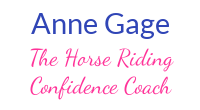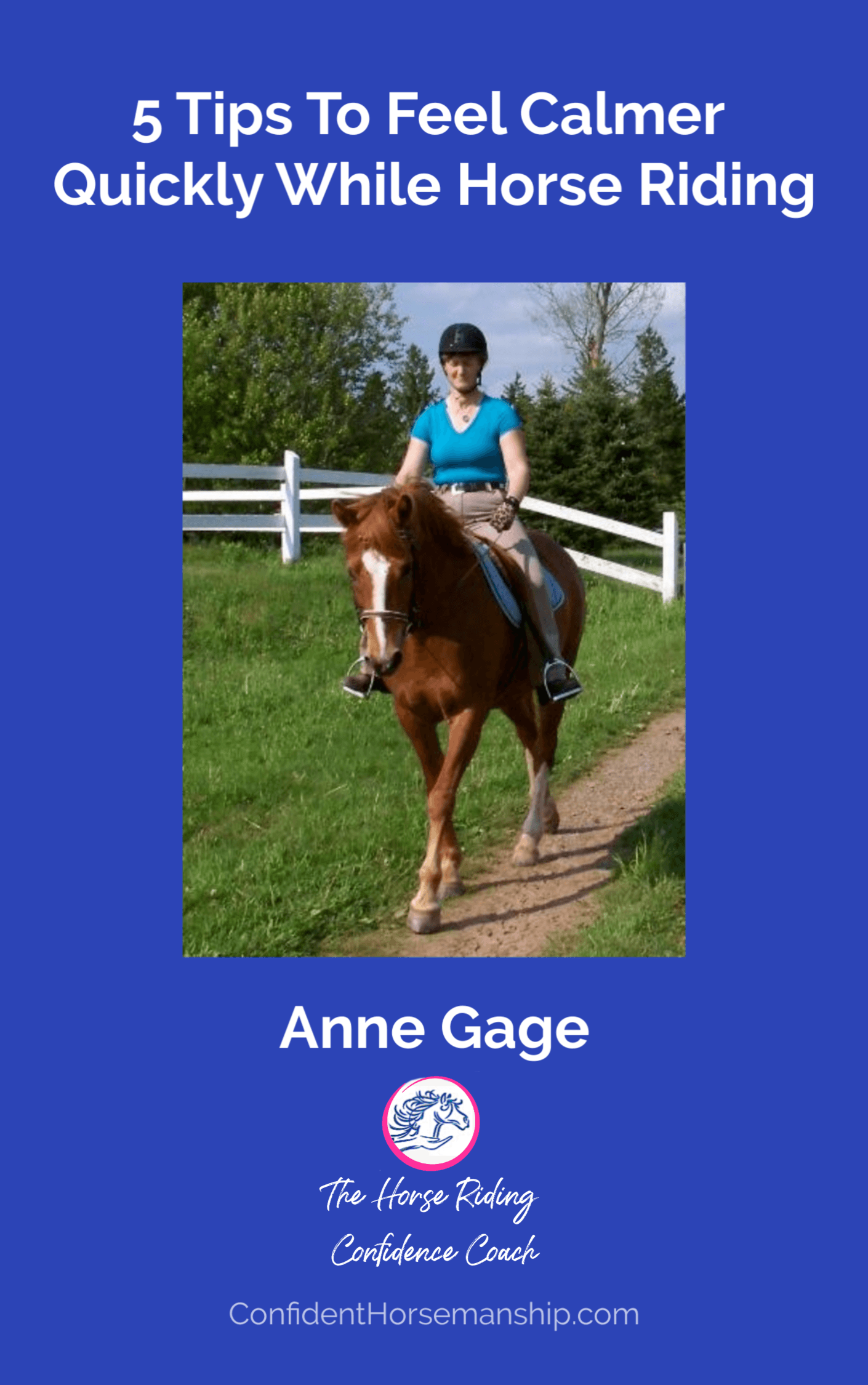
Does your horse not stand still at the mounting block? Or does he walk away as soon as you're seat is in the saddle?
It’s frustrating, unsafe and uncomfortable to start each ride fighting with your horse to stand still as you try to get in the saddle. This is a common frustration that I hear from adult horse riders. And it's especially disconcerting if you're a nervous rider.
When we were kids, it didn’t bother us to hop on a horse who might be in motion whilst we were mounting. But then, we were more agile and less fearful. It even added some excitement and a bit of a challenge, didn’t it.
But as adult riders, we aren’t quite as agile anymore. We take more time. And we really prefer to get on a horse who stands like a statue until we are in the saddle and ask the horse to move off.
Ideally, you want your horse to:
- walk willingly to the mounting block,
- stand calmly and quietly without moving whilst you get in the saddle,
- patiently wait until you ask him to move off
When your horse stands quietly to be mounted and waits for your cue before moving off, you both start your ride in a better frame of mind.
WHY WON'T YOUR HORSE STAND STILL AT THE MOUNTING BLOCK?
Remember that horses are flight animals. So, whenever they feel even the teeniest bit stressed, unsafe or uncomfortable they need to move!
This behaviour, that is perfectly natural to the horse, becomes a problem particularly when you are mounting your horse.
As with all behavioural problems, the first step is to eliminate any physical cause. That means ensuring that your horse’s tack fits correctly and that he has no soreness in his muscles, joints or skeleton.
Important To Know
Mounting from the ground is hard on your horse’s back.
Mounting from the ground torques the saddle, is uncomfortable for the horse and makes it more difficult for him to balance while you get on his back.
So, it’s best to always mount from a mounting block.
The key to having a safe riding horse - one who actually wants to go for a ride - is relaxation.
You need to watch for the tiniest signs of tension as you go through the process of teaching him to stand quietly for mounting.
This process can take a long time, but it’s definitely worth the time and effort.
Once you’ve resolved any issues of pain then follow these steps to teach your horse stand quietly while you mount.
STEPS FOR TEACHING YOUR HORSE TO STAND QUIETLY FOR MOUNTING:
Each of these steps is:
- progressive - establish one before moving on to the next
- focused on your horse being relaxed and connected
STEP 1: Start with teaching your horse to stand quietly in places away from the mounting block. This can be done when you’re not riding to begin with. Then as part of your routine before you ride.
Use a voice cue (e.g. stand) and reward your horse for standing for a very short time - one or two seconds might be all a nervous horse can manage.
Look for the “try” and reward him with a nice scratch on his favourite spot (or use clicker training)
STEP 2: Once your horse is responding well to your “stand” cue for longer than it would take you to mount then it’s time to introduce the mounting block. It’s important to realise that for some horses, the mounting block may create anxiety due to their past association with it.
Pay attention to your horse for signs of tension and start with the mounting block in sight but at a distance where he feels comfortable. A stressed horse cannot learn.
STEP 3: Calmly position your horse so that he is standing with his front feet square (side by side) and his back feet underneath him so that he is balanced and does not need to shift his weight as you mount.
STEP 4: Whenever your horse is standing still, praise him with a soft voice and a scratch on the withers.
STEP 5: Ignore any behaviour that you do not want. Focus on the behaviour you do want. For example, if your horse steps sideways or turns towards you, do not respond by telling him “no” or punishing him in any way.
You can help him by setting up a boundary with a pole on the side, behind or in front of him. Again, pay attention to your horse’s stress signals as some horses feel confined and claustrophobic even standing between poles.
STEP 6: Once your horse is able to stand calmly at the mounting block, gently ask him to bend to the left. When he does this, his barrel will be bending slightly away from you and his nose will be tipped slightly towards you.
Stroke or massage with your hand just behind his girth about where your leg sits to ask for this bend.
STEP 7: When he comes into the left bend, take up the contact on your reins to keep him in the bend and prevent him from moving forward. Keep your hands and fingers soft.
STEP 8: Exhale deeply, scratch his withers and release any tension from your body.
STEP 9: Gently take up enough contact on both reins so that, if your horse moves forward, you can put a gentle block on the reins. If he stands still, give him a reward (scratch or treat).
If your horse pushes through your block, release any pressure and calmly walk him back into position. Note: if you’re un-training an existing behaviour, it takes more time than learning it right from the start.
STEP 10: If your horse backs up check that you don’t have too much tension on the reins. (Too much tension can cause him to back up.) Try placing a pole on the ground behind him.
STEP 11: Put your left foot in the stirrup for a few seconds. Make sure your toe is pointing forwards and is not pushing into your horse’s barrel. If your horse stands quietly, reward him with a scratch or treat and take your foot out of the stirrup.
Gradually increase the length of time that your foot is in the stirrup. Next, increase the amount of pressure in the stirrup.
STEP 12: When you’re ready to get in the saddle, place both hands at the front of the saddle. Placing one hand on the cantle creates unpleasant pressure on the horse’s back. Plus, you’ll have to move it out of the way as you swing your leg over your horse’s back.
Spring up using your left leg, keeping your upper body tall and straight (as if you’re stepping up on a ladder).
Quietly, swing your right leg up and over your horse.
GENTLY lower your seat into the saddle. Reward your horse with a good scratch or a treat.
At each step, reward your horse when he stands still (at first for a very short period and gradually extending the time).
You won’t necessarily work through all of these steps in one session. It may take several sessions and even many repetitions of some steps.
As in all training, it’s important to:
- give your horse breaks
- keep the sessions short
- end the session at any point where you feel you've made progress
- change to doing something you and your horse can do easily if either of you get frustrated or stressed
- remember that a stressed person is not a good teacher. And a stressed horse cannot learn.
It may take multiple repetitions of these steps over several sessions for your horse to unlearn his old behaviour of not standing still for mounting
Remember that it takes longer to unlearn an existing behaviour than it does to teach it correctly from the beginning. So be patient whilst teaching your horse to stand still at the mounting block.
WHY FOLLOW ALL THESE STEPS TO TEACH YOUR HORSE TO STAND STILL FOR MOUNTING?
- It acknowledges your horse’s need to feel relaxed, calm and connected.
- It helps your horse look forward to being with you because he knows it will be a rewarding experience.
- It helps you to connect with how your horse is feeling so you can help him to relax.
Practice these tips with consistency and calmness and soon your horse will be standing quietly for mounting and waiting for your cue to move off.
Through this training process, you’ll also deepen your partnership with your horse as you increase mutual trust and respect. And you’ll both feel more confident.
The more trust you have in each other then the less stress either of you will feel when you’re together. So, you can both enjoy every ride.
You CAN be the Confident Horse Rider you want to be.
I've created these FREE resources to help you improve your confidence and your partnership with your horse. (I think you’ll find them really helpful)
CLICK THE PICTURES TO GET THE FREE DOWNLOADS.?



